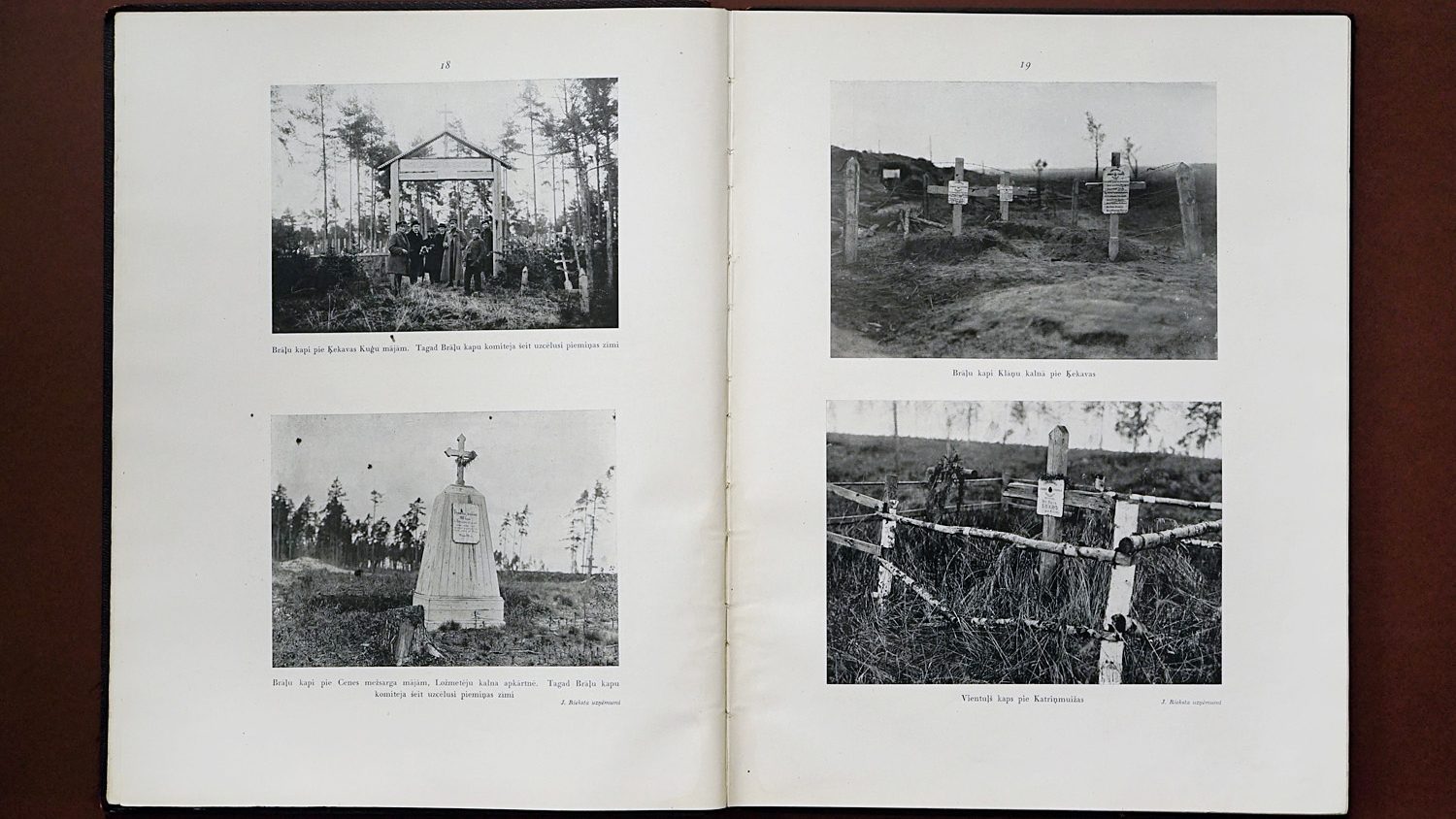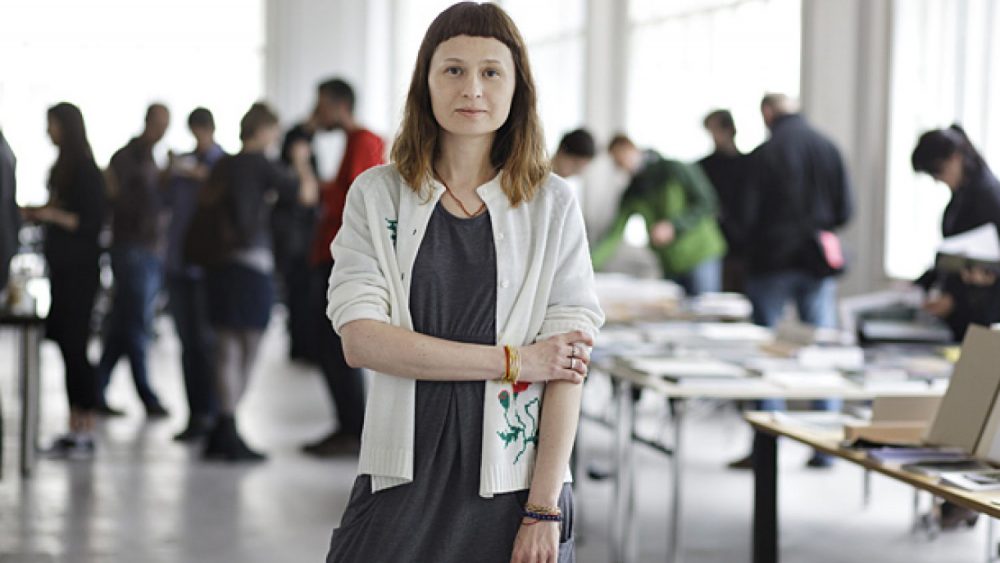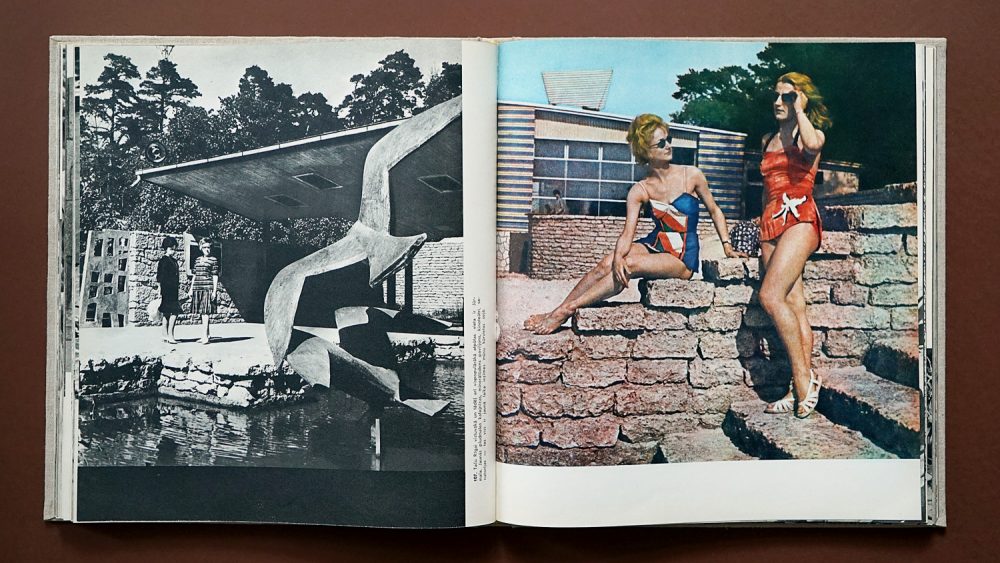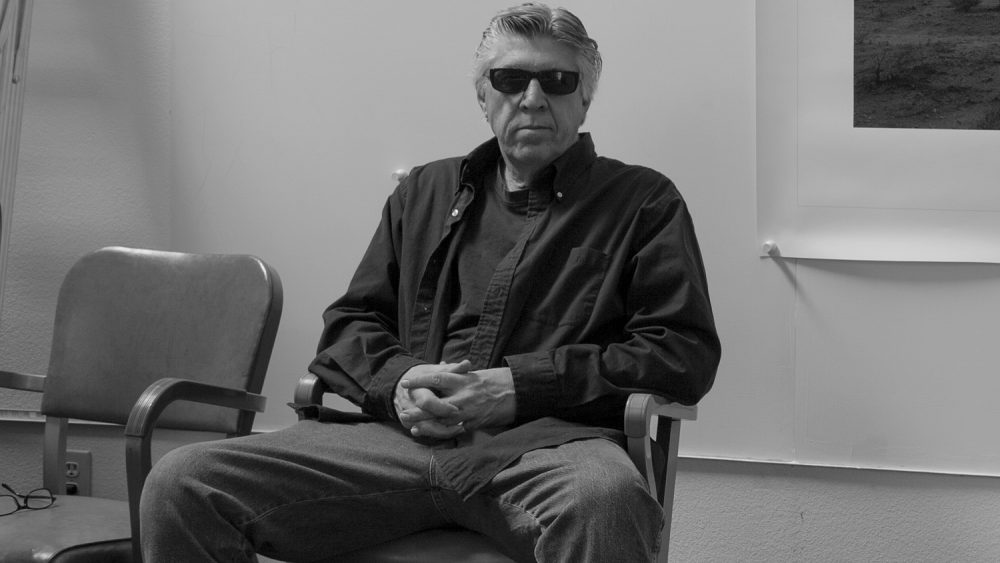Latvian photobook: A Memorial Wreath to the Fallen Heroes of Latvia
FK continues to introduce the most interesting photobooks published in Latvia in the previous century.
This time we have chosen Piemiņas vaiņags Latvijas kritušiem varoņiem (A Memorial Wreath to the Fallen Heroes of Latvia) published in 1926 by the Committee of Riga Brethren Cemetery. The introduction states that “the book is dedicated to our fallen heroes whose blood was sacrificed to win the independence of our country.” Taking into account that the book was published by the Committee of Riga Brethren Cemetery, the secondary goal is also clear – to popularize the unfinished memorial ensemble of the Brethren Cemetery, designed by sculptor Kārlis Zāle. Riga Brethren Cemetery is a unique place, since soldiers of various regimes have been buried there – riflemen who died in World War I, soldiers shot during the February Revolution, soldiers fighting on the side of the short-term Soviet Republic of Latvia (1918–1920), soldiers of the Latvian Army, later also the national partisans, and those who lost their lives in the Latvian Waffen SS Legion and the Soviet Army.
The book was compiled by painter Alberts Prande (1893–1957), who was the Arts Editor of several magazines in the mid-1920s and a passionate book collector. The authors of most of the photographs were Jānis Rieksts (1881–1970) and studio Klio, belonging to Vilis Rīdzenieks (1884–1962). Rieksts was a representative of Pictorialism who was well known for his portraits of Latvian intelligentsia at the time. Rīdzenieks is best known as the author of the only photograph from the moment when the independence of Latvia was announced on 18 November 1918, but Klio was his photography studio in Riga (1915–1935).
The photographs are arranged according to thematic blocks. The section The Resting Places of Heroes consists of photographs of graves in various places in Latvia and of shots depicting the funeral sites of soldiers at the Brethren Cemetery in 1916 and 1919, as well as from the memorial events and processions in cemeteries in the early 20th century. In the section Constructions of the Brethren Cemetery, Monuments and Grave Signs readers are presented the layout and drafts of the site, as well as images of the construction process of the memorial ensemble. This section also includes memorial sites in other Latvian regions – in Limbaži, Ložmetēju Hill, Cēsis and elsewhere. The section Previous Sites of Battle reveals historical images of Riga destroyed in the war (from 1919) and the landscapes of battle sites (at Ložmetēju Hill, Nāves sala, etc.). The section From the Life of Soldiers introduces group images of soldiers mostly from 1919, when active warfare was still going on. This section is followed by Some Moments from when the State of Latvia Was Founded, which is introduced by the famous photograph by Vilis Rīdzenieks, as well as images from the interim government of Kārlis Ulmanis, army parades and awarding ceremonies. The book concludes with the sections Flags of Latvian Army Regiments and War and Art. The latter also includes a text, introducing readers to examples of the theme of war in arts and literature. The section is concluded by poems dedicated to the theme of war.
The construction works of the memorial ensemble of the Brethren Cemetery were completely finished in 1936, therefore, contrary to the books published later that were focused on the architecture of this memorial site, this book is dominated by images of graves, coffins and crosses. It very much resonates with Latvian cemetery culture, in which many memorial days are celebrated and many graveyard-tending traditions exist. The fetish of the cemetery is the most bizarre and touching aspect of the book.



